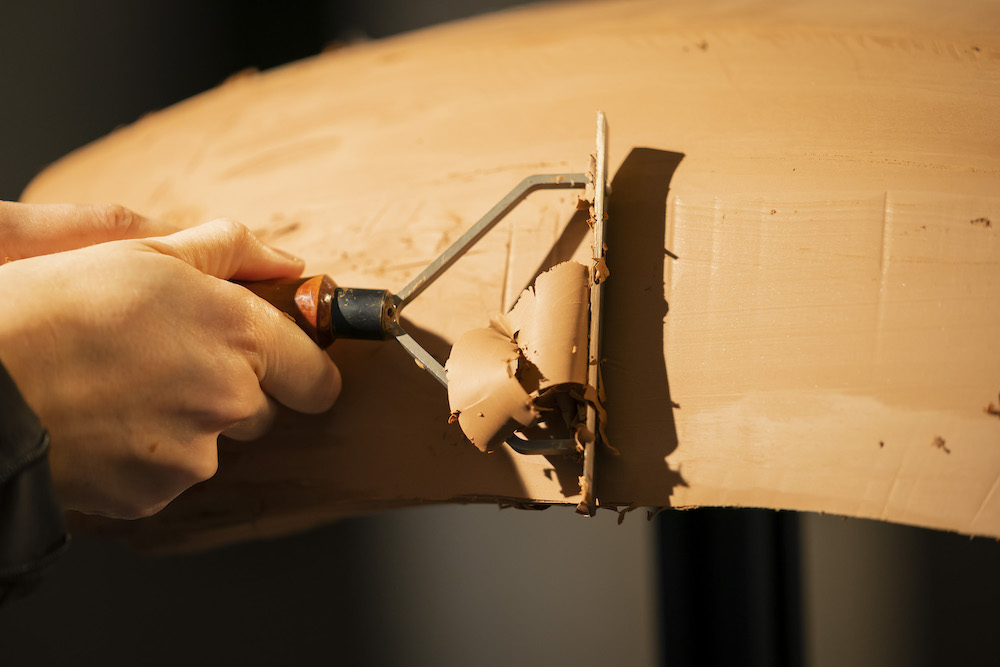With so many options out there, how do you choose?
I remember the first time I went grocery shopping without my parents and feeling paralyzed by all the different options for salad dressing. I only had one job—to buy salad dressing—yet I couldn’t make the decision.
Do I go for classic ranch or caesar? What about garlic caesar? And why are some cheaper than others? Raspberry vinaigrette sounds good too, but balsamic vinaigrette is the safer option.
And now with Amazon and online shopping, it’s even worse. There are over 8,000 results for “salad dressing” on Amazon!
Well, fast forward several years later, I felt the same way when shopping for a new car…
…but this time, I saw the leadership lesson underneath the surface.
Did you know that clay is still used to design cars? No, I’m not referring to a small lump of clay or Play Doh that you model into a miniature car. I’m referring to full life sized models of cars made out of clay!
Okay, to be honest, I didn’t know that clay was ever used to design cars, but it makes sense as a medium…of the past. From 1927 to the end of the 1950s, Harley Earl of General Motors used clay to design cars. But that was then! These days, car companies have 3D printers, design software, and virtual reality at their disposal, so why would they still use such an archaic method for design?
I didn’t understand why, until I came across this one particular Mazda commercial.
Now, is Mazda the only car company using clay to design their vehicles? By no means! Yet, that commercial helped me see Mazda cars as sculptures of art, rather than hunks of metal or utilitarian modes of transportation.
And it’s all because design is a core value for Mazda.
For Mazda, design is “art that generates a soul.” Here’s how they put it on their website:
We engineer cars that deliver pure driving joy. That starts with alluring design that conveys soul and personality. Design that is uniquely Mazda. Each and every car in our lineup is made to appeal to the senses, and design is the language we use to communicate that. Because we believe your emotional response to them is just as important as their mechanical response to you.
Creating a sense of motion, even at a standstill—That’s the essence of Mazda’s KODO: “Soul of Motion” design philosophy. It allows designers to imbue each model with its own personality while staying true to a unifying theme. Cars are our canvas, and every one we make begs to be driven. We’re honored that drivers are so happy to oblige.
In the same way that an artist wants to evoke a response from his audience, we want to design cars that spark emotion in drivers. Only human hands can create true art and so this is where our process begins. We call it “Exploratory Preparation,” and it rarely includes anything car-like. Rather, we experiment with forms that we find exciting or pleasing and translate these ideas into fabrication, where the human hand always plays a vital role.
We’re in the golden age of computer-aided design. It allows us to render 3D models with a level of accuracy that was out of reach just a few short years ago. But at Mazda, design starts with a block of clay. And for that, there is simply no substitute. Artisans shape the clay until the ideal lines reveal themselves and only then do they collaborate with digital modelers. This traditional/digital partnership takes the best of both worlds to create uniquely appealing designs.
Now to be completely clear, Mazda is not the only car company that uses clay to design their vehicles. In fact, they didn’t even invent the idea—GM was the first one to do it. However, because of their core value for design, they’ve been able to leverage their use of clay and design to set themselves apart from the competition.
Just imagine if Ford, Toyota, or any other non-luxury car company tried the same commercial? It would feel disingenuous, right? After all, Toyota Camry’s are blasé. Honda CR-V’s are utilitarian. Nissan Murano’s look like every other SUV out there. And because Ford keeps on trying to reinvent themselves, I don’t even know what they’re about anymore. Yet the new line of Mazda’s are absolutely stunning—especially for a non-luxury vehicle.
This is because Mazda’s core value of design dictates everything for them.
If you were to compare your church or organization to a car company, which one would you liken it to?
From a general point of view, every car company has the same vision and strategy—to make cars, sell cars, and generate profit.
It’s their core values that separates one from the other.
And it’s the same with your church or organization. You might even have two churches in the same neighborhood with the same vision and strategy, but they will feel completely different because of the unique core values of each church.
This is because core values are not what you do; they are what characterize everything you do.
Here’s how I put it in my book, No Silver Bullets:
Core values “influence behavior and strategic decision-making. They influence the way your systems operate. They influence the strategic decisions and direction you need to make to get to your vision. They are essentially the personality of your church. To put it another way, your values are the litmus test that determines who will feel comfortable in your church and thrive as a valuable member and leader in it. Values are not what you do; they are what characterize everything you do.
So, what are the values of your church? And are they core? Accidental? Permission-to-play? Or aspirational?
Learn more by reading this article on the difference between authenticity vs excellence, or walk through the Values Audit in chapter 7 of my book, No Silver Bullets: Five Small Shifts that will Transform Your Ministry.
